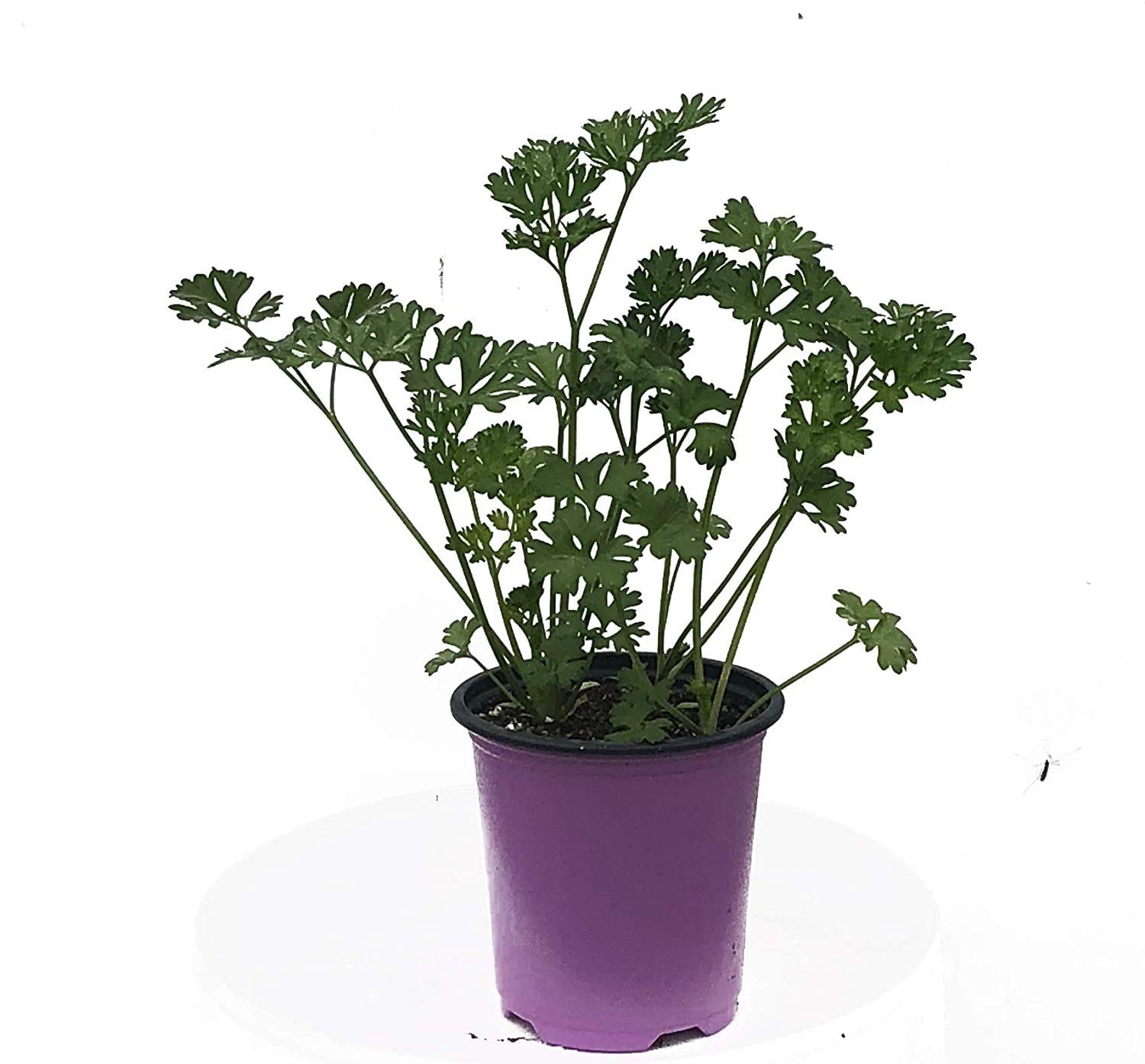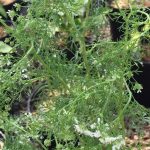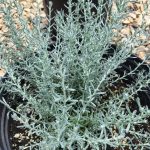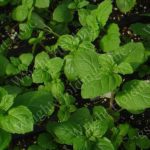Petroselinum crispum, Parsley Triple Curl
Price range: $0.79 through $5.99
Discount per quantity
| Quantity | 3 - 8 | 9 - 14 | 15+ |
|---|---|---|---|
| Price | Price range: $0.77 through $5.81 | Price range: $0.74 through $5.63 | Price range: $0.71 through $5.39 |
| % Discount | 3% | 6% | 10% |
Description
Petroselinum crispum ‘Triple Curl’: A Complete Guide to Growing and Enjoying Curly Parsley
Curly parsley, officially known as Petroselinum crispum ‘Triple Curl’, is a familiar herb with frilly leaves and fresh green flavor. Many gardeners grow it for more than its taste. It brings beauty to beds, thrives in pots, and works as a garnish, seasoning, and pollinator-friendly plant. This guide explores every detail—from planting to harvesting—so you can enjoy its vibrant charm all year.
Meet Triple Curl Parsley
Triple Curl parsley is a variety of curly parsley with especially tight, ruffled leaves. The rich green curls stand upright and form dense clumps. Compared to flat-leaf parsley, Triple Curl is milder in flavor but more decorative. Chefs often choose it to garnish plates or add subtle herbal notes to salads and soups. Gardeners love it because it looks like a soft, green bouquet in the garden.
- Botanical Name: Petroselinum crispum ‘Triple Curl’
- Common Name: Curly Parsley, Triple Curl Parsley
- Plant Type: Biennial (grown as an annual)
- Height and Spread: 10–12 inches tall, 8–10 inches wide
- Leaf Shape: Tight, frilled, curly clusters
- Flavor Profile: Mild, fresh, slightly grassy
Why Grow Triple Curl Parsley?
Parsley is one of those herbs that belongs in every garden or kitchen windowsill. The Triple Curl variety offers unique benefits:
1. Attractive and Edible
The tight curls are beautiful in herb beds, borders, or mixed containers. They’re equally practical in the kitchen—fresh, dried, or frozen.
2. Pollinator Friendly
In its second year, parsley produces tiny yellow-green flowers that draw bees, butterflies, and other beneficial insects.
3. Cold Hardy and Versatile
This herb tolerates cooler temperatures better than many annual herbs, giving you longer harvests into fall and even winter in mild climates.
4. Compact and Perfect for Containers
Its tidy growth habit makes it ideal for small spaces, patios, and windowsills.
Growing Conditions for Triple Curl Parsley
Parsley is easy to grow when you give it the right environment. It’s adaptable but thrives with these basic conditions:
Sunlight
- Full sun is best (6–8 hours daily).
- Will tolerate partial shade, especially in hot summer climates.
Soil
- Loose, rich soil with good drainage.
- pH between 6.0 and 7.0 is ideal.
- Add compost or organic matter before planting to boost nutrients.
Watering
- Keep soil evenly moist, not soggy.
- Deep watering 1–2 times per week works well.
- Mulch around plants to retain moisture and keep leaves clean.
Temperature
- Prefers cool to mild conditions (50–75°F).
- Can handle light frost, especially with mulch or row covers.
Planting Triple Curl Parsley
From Seed
Parsley seeds germinate slowly, often taking 2–4 weeks. Patience pays off.
- Soak seeds overnight in warm water to speed sprouting.
- Sow ¼ inch deep in prepared soil or seed-starting mix.
- Keep consistently moist until seedlings emerge.
- Thin seedlings to 8–10 inches apart once they develop true leaves.
From Transplants
Buying young plants saves time.
- Plant outdoors after the last frost date.
- Space 8–10 inches apart in rows or containers.
- Water well after planting to help them settle.
Container Growing Tips
Triple Curl parsley thrives in pots as small as 8–10 inches wide. Use high-quality potting mix and place in a sunny spot. Keep containers watered more frequently than garden beds—they dry out faster.
Pro tip: Combine parsley with other herbs like thyme or oregano for a compact, culinary container garden.
Caring for Triple Curl Parsley
Feeding
- Fertilize every 4–6 weeks with balanced organic fertilizer.
- Too much nitrogen can lead to lush leaves with less flavor.
Pruning and Harvesting
- Harvest outer leaves first, allowing inner growth to continue.
- Frequent cutting encourages more foliage.
- Avoid cutting more than one-third of the plant at a time.
Mulching
- Apply a light mulch to conserve moisture and prevent weeds.
- Straw, shredded leaves, or compost work well.
Overwintering
- In mild zones, parsley may overwinter outdoors with mulch.
- In colder regions, grow in pots you can bring indoors to a sunny windowsill.
Pests and Problems
Parsley is mostly trouble-free, but watch for:
- Aphids: Wash off with water or use insecticidal soap.
- Parsley Worms (Swallowtail Caterpillars): They’re harmless to humans and turn into butterflies. Consider sharing your harvest with them.
- Fungal Diseases: Prevent by spacing plants well and watering at the base, not the leaves.
Harvesting and Storing Triple Curl Parsley
When to Harvest
- Begin harvesting once plants reach 6 inches tall.
- Cut outer stems at the base for the freshest growth.
Storage
- Fresh: Keep stems in a glass of water in the fridge (change water every 2–3 days).
- Freezing: Chop and freeze in ice cube trays with water or oil.
- Drying: Air-dry bunches or use a dehydrator; store in airtight jars.
Culinary Uses
Triple Curl parsley is more than just a garnish. Its mild flavor brightens dishes without overpowering them.
- Add to soups, stews, and sauces at the end of cooking.
- Mix into salads, grain bowls, or fresh tabbouleh.
- Use as a green accent for roasted vegetables, fish, or meats.
- Blend with garlic and olive oil for fresh chimichurri or gremolata.
Health Benefits
Parsley is packed with vitamins and minerals:
- Vitamin K: Supports bone health and blood clotting.
- Vitamin C: Boosts immunity and skin health.
- Antioxidants: Help fight free radicals and inflammation.
- Folate: Supports heart health and cell function.
Eating parsley regularly adds a subtle nutritional boost to daily meals.
Companion Planting
Parsley works well in mixed beds and benefits many vegetables:
- Good Companions: Tomatoes, peppers, asparagus, carrots, roses.
- Bad Companions: Avoid planting near mint (it can overwhelm parsley).
Its flowers attract beneficial insects, making it a natural pest helper.
Fun Facts About Triple Curl Parsley
- Ancient Greeks used parsley to crown athletes and decorate tombs.
- It’s a biennial plant, meaning it grows leaves the first year and flowers the second.
- The curled leaves resist dirt splash, keeping them cleaner after rain.
Bringing It All Together
Triple Curl parsley is a classic herb that deserves a spot in every garden. Its frilled leaves bring both flavor and beauty, whether you’re sprinkling them over roasted vegetables or growing them in a sunny windowsill pot. With minimal care—steady moisture, a touch of compost, and frequent harvests—you’ll enjoy months of fresh greenery. Best of all, its blooms invite pollinators, adding even more life to your garden.
A Fresh Green Touch for Every Season
When you grow Petroselinum crispum ‘Triple Curl’, you’re planting more than an herb. You’re inviting color, flavor, and a sense of abundance into your garden. This little plant works hard all year—offering fresh leaves in summer, resilience in cool weather, and beauty in every bouquet-like clump. Whether you’re a seasoned gardener or just starting out, Triple Curl parsley rewards you with ease and charm, one curly leaf at a time.
Additional information
| Weight | N/A |
|---|---|
| Options | Seed 50 Count, 3.5 in. (12.3 fl. oz.) Pot |





